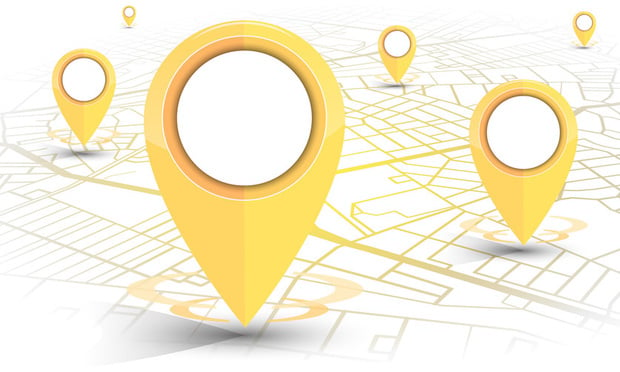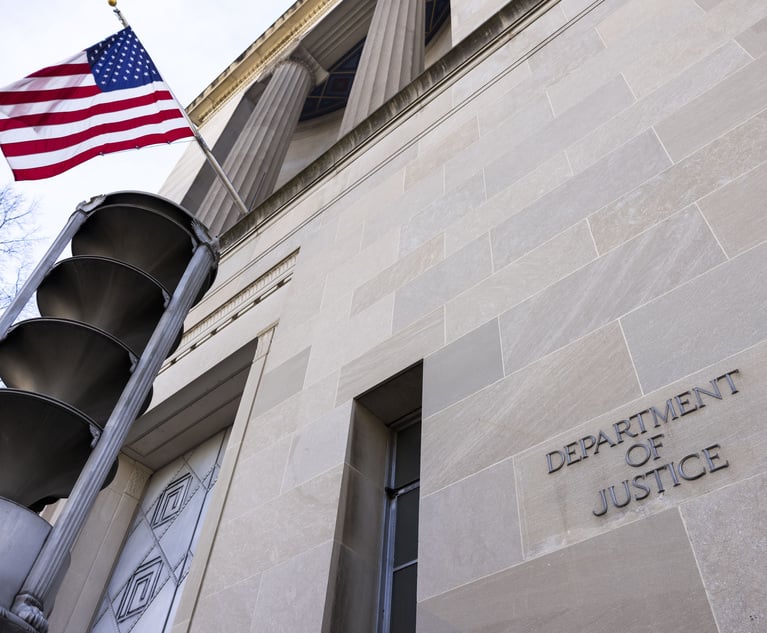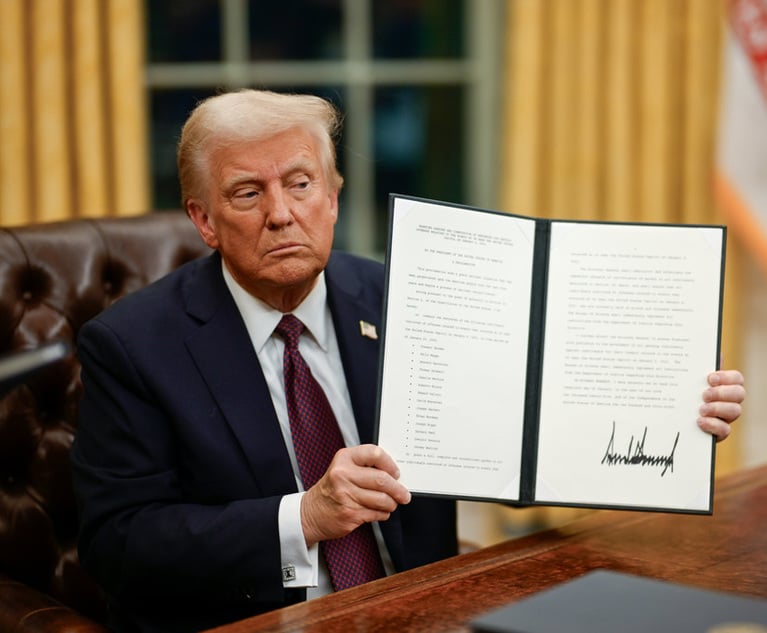Google Maps and Other Web Mapping as Litigation Tools
In their Trial Practice column, Robert S. Kelner, Gail S. Kelner and Joshua D. Kelner discuss the meaning and impact of a recent CPLR amendment which makes Internet mapping services like Google Maps a part of a practitioner's arsenal when litigating personal injury matters.
May 20, 2019 at 12:45 PM
10 minute read
 In recent years, the increasing use and sophistication of Internet sites has had important effects on personal injury litigation. Perhaps most significantly, materials on a party's Facebook account are now, under certain instances, discoverable—whether the account holder believed the postings to be available to the public or not. See Forman v. Henkin, 30 N.Y.2d 656 (2018). An adversary's Facebook materials are now, in many cases, a potent part of the practitioner's arsenal in litigating a personal injury case. A recent bill has made Internet mapping services like Google Maps a part of that arsenal as well. On Dec. 28, 2018, Governor Cuomo signed an amendment to CPLR 4511, which made the information available from Google Maps and similar services a presumptively proper subject of judicial notice. In this column, we will discuss the meaning and effect of this extremely important provision.
In recent years, the increasing use and sophistication of Internet sites has had important effects on personal injury litigation. Perhaps most significantly, materials on a party's Facebook account are now, under certain instances, discoverable—whether the account holder believed the postings to be available to the public or not. See Forman v. Henkin, 30 N.Y.2d 656 (2018). An adversary's Facebook materials are now, in many cases, a potent part of the practitioner's arsenal in litigating a personal injury case. A recent bill has made Internet mapping services like Google Maps a part of that arsenal as well. On Dec. 28, 2018, Governor Cuomo signed an amendment to CPLR 4511, which made the information available from Google Maps and similar services a presumptively proper subject of judicial notice. In this column, we will discuss the meaning and effect of this extremely important provision.
The Legislature's Enactment of the Amendment to CPLR 4511. The bill was sponsored in the New York State Senate by Sen. Michael Gianaris. The memorandum he submitted in support of the legislation stated that its purpose was to “allow judicial notice of google maps and other web mapping or global imaging websites.” As the memorandum noted, web mapping services are a convenient and generally reliable source of information, and their use in litigation can realize important efficiencies for the courts. The memorandum explained: “Google Maps is a tool that can be used by the courts to fairly resolve cases in a timely manner. Allowing a judge to take judicial notice of a satellite image, location, distance, or other information using Google Maps would relieve the parties from having to otherwise prove the information evidenced in the image or map.”
The memorandum indicated that the federal courts had treated data from mapping services as a proper subject of notice, and expressed a desire to adopt a similarly permissive approach to these materials in New York. For example, the memorandum approvingly cited a decision by the U.S. Court of Appeals for the Ninth Circuit in United States v. Lizarraga-Tirado, 789 F.3d 1107 (9th Cir. 2015). In that case, which was a criminal prosecution, the defendant had been arrested for illegally reentering the country from Mexico. The defendant denied having crossed into the United States on the night in question, and contended that he had actually been improperly arrested on the Mexican side of the border. In response, the government sought to use images and data from Google Earth. Google Earth shows bird's eye view satellite images, and contains a feature that allows a user to place a “tack” on a satellite image to show where particular GPS coordinates fall. The agent who arrested the defendant testified to the GPS coordinates where she arrested the defendant. When plugged into Google Earth, the tack for these coordinates fell on the United States side of the border. The court found that the image and GPS tack were both properly the subject of judicial notice.
The bill signed by Governor Cuomo set out the conditions under which judicial notice should be taken of such materials in the New York state courts. The language it adopted, which appears in CPLR 4511(c), provides, in relevant part, that “[e]very court shall take judicial notice of an image, map, location, distance, calculation, or other information taken from a web mapping service, a global satellite imaging site, or an Internet mapping tool, when requested by a party to the action, subject to a rebuttable presumption that such image, map, location, distance, calculation, or other information fairly and accurately depicts the evidence presented.”
The Meaning and Potential Significance of the Provision. There are several important points to make about the language of the new provision. First, note that it provides that a court “shall” take judicial notice of the data in question. Unlike some other kinds of information, mapping service materials are a subject of mandatory, not discretionary, notice, subject to the offering party's satisfaction of the remaining terms of CPLR 4511(c). Second, the provision makes broad categories of information the proper subject of judicial notice. It encompasses not only maps, but also any image, calculation, or “other information” that a mapping service might include. In other words, this means that the broad array of information and tools on sophisticated mapping services like Google are proper subjects of judicial notice—with potentially sweeping implications, as we discuss below.
Third, the presumption the statute creates concerning the propriety of judicial notice is rebuttable by the party resisting its use. But while the presumption is rebuttable, in practice, the presumption will be difficult to rebut. The statute provides: “The presumption established by this subdivision shall be rebutted by credible and reliable evidence that the image, map, location, distance, calculation, or other information taken from a web mapping service, a global satellite imaging site, or an Internet mapping tool does not fairly and accurately portray that which it is being offered to prove.” In many or most cases, it will be difficult for a litigant to offer “credible and reliable evidence” to refute information obtained from a mapping service.
CPLR 4511(c) also establishes a specific procedure that must be followed for the information to be considered. A party seeking to offer it at “a trial or hearing” must “at least thirty days before the trial or hearing, give notice of such intent, providing a copy or specifying the Internet address at which such image or information may be inspected.” The opposing party then must, “[n]o later than ten days before the trial or hearing … object to the request for judicial notice of such image or information, stating the grounds for the objection.” Absent such an objection or “evidence which could not have been discovered by the exercise of due diligence” by that deadline, the court must take judicial notice.
Some of the tools that Google maps offers can be valuable for basic background information at trial. The maps will show roads, the directions of travel in which they proceed, and the distances between two particular locations. Google Earth satellite images will contain the same kinds of information, and also will typically allow someone to demonstrate the configurations of roadways (e.g., the number of lanes, placement of traffic lights, the availability of parking, etc.).
Perhaps the single most important tool that parties will find useful in litigation will be Google Maps' “street view” function. By typing an address into Google, one will typically be able to see a photograph of the building in question and the surrounding area. The photograph will be displayed with the month and year in which it was taken. Google periodically resurveys areas and takes new photographs. When it has taken a number of different photographs of an address over time, one can also see all prior photographs that Google took, with the dates on which they were taken. For example, if one types 60 Centre Street, New York, N.Y., into Google, one will be able to see a recent photograph taken in December 2017, and prior photographs dating all the way back to 2009. There are also other mapping services which, while less comprehensive than Google, may also offer useful historical data. For example, Microsoft's search engine, Bing, contains a mapping feature as well.
The ability to offer in evidence a prior, dated photograph of a property or area can be extremely powerful evidence, especially in cases arising from allegations of defective sidewalks, structural deficiencies outside buildings, or unsafe roadway conditions. If one is trying to prove that an area was hazardous on the date of an accident, an image showing a defect existed for a prolonged period of time before can be extremely powerful evidence on the issue of notice. It also can serve to refute a witness' claim that a defect did not exist at the time in question.
One item in Google maps that may be significant, but may be less likely to be generally admissible, is the site's feature that allows one to calculate the amount of time it takes to travel between two particular points, given traffic conditions. For example, if one enters two addresses at a particular time of day, it will show the approximate time it would take, with traffic, to drive from one location to the other. One can certainly conceive of cases where a witness' testimony about the time it took to travel between two locations is significant to the accuracy of his or her account. However, given that these searches are specific to the traffic at the time the search is actually performed, a court could conceivably find that the data is irrelevant to a case, and therefore inadmissible.
CPLR 4511(c) does not specifically state whether mapping data is admissible on motion practice, but there is every reason to believe that it is. First, the permissibility of using the data on motion practice is suggested by the language of the provision itself. CPLR 4511(c) makes reference to mapping data being admissible at a “trial or hearing.” The term “hearing” is used elsewhere in the CPLR to refer to the date for a court's consideration of a motion. For instance, CPLR 2214(a), which relates to when a motion will be heard, provides that a “notice of motion shall specify the time and place of the hearing on the motion.” Thus, a motion return date would appear to represent a “hearing” within the meaning of the provision. (We note, though, that there is not yet any case law on the point.)
Second, summary judgment is considered to be “the procedural equivalent of a trial.” Jones Lang Wootton USA v. LeBoeuf, Lamb, Greene & MacRae, 243 A.D.2d 168, 177 (1st Dept. 1998); see also Rivers v. Birnbaum, 102 A.D.3d 26, 42 (2d Dept. 2012). Thus, it is highly unlikely that the kind of evidence admissible at trial as a matter of judicial notice would be treated differently for purposes of motion practice. A litigant intending to use such evidence in a motion is advised to take careful note of the procedural requirements of CPLR 4511(c), particularly the fact that notice must be given 30 days before the “hearing” and either the address or a copy exchanged. The provision does not contain specific guidance about the form the “notice” must take. It is not clear, for instance whether merely referencing the information in the motion is sufficient, though it would seem to meet the requirements, so long as there is sufficient time for the opposing party to respond. But with any new provision, parties are always well advised to err on the side of caution.
If our analysis of this point is correct, then Google street view images may be offered in support of summary judgment motions on the issue of liability in cases arising from sidewalk defects (and other similarly observable hazards located outside properties).
Clearly, this new legislation may have major ramifications in personal injury litigation. The age of technology has arrived.
Robert S. Kelner is senior partner at Kelner and Kelner. Gail S. Kelner is an attorney with the firm. Joshua D. Kelner, an attorney with the firm participated in the writing of the column.
This content has been archived. It is available through our partners, LexisNexis® and Bloomberg Law.
To view this content, please continue to their sites.
Not a Lexis Subscriber?
Subscribe Now
Not a Bloomberg Law Subscriber?
Subscribe Now
NOT FOR REPRINT
© 2025 ALM Global, LLC, All Rights Reserved. Request academic re-use from www.copyright.com. All other uses, submit a request to [email protected]. For more information visit Asset & Logo Licensing.
You Might Like
View All
'A Shock to the System’: Some Government Attorneys Are Forced Out, While Others Weigh Job Options
7 minute read
'Serious Legal Errors'?: Rival League May Appeal Following Dismissal of Soccer Antitrust Case
6 minute read
How Some Elite Law Firms Are Growing Equity Partner Ranks Faster Than Others
4 minute read
Trending Stories
- 1We Must Uphold the Rights of Immigrant Students
- 2Orrick Picks Up 13-Lawyer Tech, VC Group From Gunderson Dettmer
- 3How Alzheimer’s and Other Cognitive Diseases Affect Guardianship, POAs and Estate Planning
- 4How Lower Courts Are Interpreting Justices' Decision in 'Muldrow v. City of St. Louis'
- 5Phantom Income/Retained Earnings and the Potential for Inflated Support
Who Got The Work
J. Brugh Lower of Gibbons has entered an appearance for industrial equipment supplier Devco Corporation in a pending trademark infringement lawsuit. The suit, accusing the defendant of selling knock-off Graco products, was filed Dec. 18 in New Jersey District Court by Rivkin Radler on behalf of Graco Inc. and Graco Minnesota. The case, assigned to U.S. District Judge Zahid N. Quraishi, is 3:24-cv-11294, Graco Inc. et al v. Devco Corporation.
Who Got The Work
Rebecca Maller-Stein and Kent A. Yalowitz of Arnold & Porter Kaye Scholer have entered their appearances for Hanaco Venture Capital and its executives, Lior Prosor and David Frankel, in a pending securities lawsuit. The action, filed on Dec. 24 in New York Southern District Court by Zell, Aron & Co. on behalf of Goldeneye Advisors, accuses the defendants of negligently and fraudulently managing the plaintiff's $1 million investment. The case, assigned to U.S. District Judge Vernon S. Broderick, is 1:24-cv-09918, Goldeneye Advisors, LLC v. Hanaco Venture Capital, Ltd. et al.
Who Got The Work
Attorneys from A&O Shearman has stepped in as defense counsel for Toronto-Dominion Bank and other defendants in a pending securities class action. The suit, filed Dec. 11 in New York Southern District Court by Bleichmar Fonti & Auld, accuses the defendants of concealing the bank's 'pervasive' deficiencies in regards to its compliance with the Bank Secrecy Act and the quality of its anti-money laundering controls. The case, assigned to U.S. District Judge Arun Subramanian, is 1:24-cv-09445, Gonzalez v. The Toronto-Dominion Bank et al.
Who Got The Work
Crown Castle International, a Pennsylvania company providing shared communications infrastructure, has turned to Luke D. Wolf of Gordon Rees Scully Mansukhani to fend off a pending breach-of-contract lawsuit. The court action, filed Nov. 25 in Michigan Eastern District Court by Hooper Hathaway PC on behalf of The Town Residences LLC, accuses Crown Castle of failing to transfer approximately $30,000 in utility payments from T-Mobile in breach of a roof-top lease and assignment agreement. The case, assigned to U.S. District Judge Susan K. Declercq, is 2:24-cv-13131, The Town Residences LLC v. T-Mobile US, Inc. et al.
Who Got The Work
Wilfred P. Coronato and Daniel M. Schwartz of McCarter & English have stepped in as defense counsel to Electrolux Home Products Inc. in a pending product liability lawsuit. The court action, filed Nov. 26 in New York Eastern District Court by Poulos Lopiccolo PC and Nagel Rice LLP on behalf of David Stern, alleges that the defendant's refrigerators’ drawers and shelving repeatedly break and fall apart within months after purchase. The case, assigned to U.S. District Judge Joan M. Azrack, is 2:24-cv-08204, Stern v. Electrolux Home Products, Inc.
Featured Firms
Law Offices of Gary Martin Hays & Associates, P.C.
(470) 294-1674
Law Offices of Mark E. Salomone
(857) 444-6468
Smith & Hassler
(713) 739-1250






